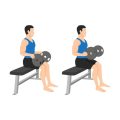Understanding Cognitive Rehabilitation
What is Cognitive Rehabilitation?
Cognitive rehabilitation is a therapeutic approach that helps individuals regain or improve cognitive skills that have been affected by injury, illness, or neurological conditions. This process focuses on essential brain functions such as memory, attention, problem-solving, and organization. In the United States, cognitive rehabilitation is widely used to support people recovering from traumatic brain injuries (TBI), stroke, and other neurological disorders.
Core Principles of Cognitive Rehabilitation
| Principle | Description |
|---|---|
| Personalization | Programs are tailored to each individuals unique strengths, weaknesses, and goals. |
| Functional Integration | Interventions are designed to improve everyday activities and participation in daily life. |
| Repetition and Practice | Skills are built through consistent practice and repetition in real-world settings. |
| Feedback and Adjustment | Therapists provide ongoing feedback and modify strategies as needed for optimal progress. |
| Collaboration | Cognitive rehabilitation often involves working closely with families, caregivers, and other healthcare professionals. |
The Purpose of Cognitive Rehabilitation in Therapy
The main goal of cognitive rehabilitation is to enhance independence and quality of life by helping individuals manage challenges in thinking, learning, and daily functioning. In occupational therapy settings across America, these interventions are integrated into daily routines—such as managing finances, returning to work or school, cooking meals, or participating in community activities. Therapists use evidence-based strategies to address specific deficits while promoting meaningful participation in everyday tasks.
Evidence Supporting Cognitive Rehabilitation in the U.S.
Research studies in the United States have consistently shown that cognitive rehabilitation is effective for people with various neurological conditions. For example, clinical trials have demonstrated improvements in memory, executive function, and overall daily performance among individuals with TBI or stroke. Major organizations like the American Congress of Rehabilitation Medicine (ACRM) and the Brain Injury Association of America endorse cognitive rehabilitation as a standard part of recovery for brain injury populations. These recommendations are grounded in decades of research showing positive outcomes when cognitive interventions are combined with occupational performance training.
2. Assessing Daily Occupational Performance
When it comes to integrating cognitive rehabilitation with daily occupational performance, assessing how clients manage their everyday activities is a crucial step. In the United States, where cultural routines and occupational expectations can vary widely, using assessment methods and tools that reflect American lifestyles helps ensure more effective and relevant interventions.
Methods for Assessing Daily Activities
Occupational therapists and rehabilitation professionals often use a combination of interviews, standardized assessments, self-reports, and observation to understand a client’s functional abilities in real-life situations. These assessments focus on common American routines such as grocery shopping, meal preparation, managing finances, driving, and community participation.
Commonly Used Assessment Tools in the U.S.
| Assessment Tool | Description | Cultural Relevance |
|---|---|---|
| Canadian Occupational Performance Measure (COPM) | A semi-structured interview that helps identify issues in self-care, productivity, and leisure activities | Easily adapted to American routines like childcare, work tasks, and home management |
| Assessment of Motor and Process Skills (AMPS) | Observational tool measuring quality of ADLs (Activities of Daily Living) and IADLs (Instrumental Activities of Daily Living) | Covers American daily tasks such as laundry, cooking, and cleaning |
| Executive Function Performance Test (EFPT) | Evaluates executive function during real-world tasks like cooking oatmeal or using the phone | Tasks selected are familiar to most Americans and reflect typical household routines |
| Performance Assessment of Self-Care Skills (PASS) | Assesses independence in functional mobility, personal care, and home maintenance activities | Includes culturally common tasks such as making a sandwich or paying bills online |
| Self-Report Questionnaires (e.g., Lawton IADL Scale) | Clients rate their ability to perform daily activities independently | Focuses on tasks like managing medications or handling finances—key aspects of American independent living |
Considering American Routines and Expectations
Cultural context matters greatly when evaluating occupational performance. For example, many Americans value independence in daily life—being able to drive to work, cook meals at home, handle online banking, or participate in community events. Understanding these expectations allows therapists to tailor assessments so they match what clients actually want or need to do in their own environments.
Examples of Typical Daily Activities in the U.S.
| Activity Category | Common Examples in the U.S. |
|---|---|
| Self-Care | Dressing for work/school, showering independently |
| IADLs (Instrumental Activities of Daily Living) | Grocery shopping at supermarkets like Walmart or Target; preparing family dinners; paying bills online; using public transportation or driving a car; managing medication schedules via smartphone apps |
| Leisure & Community Engagement | Attending church services; volunteering; participating in local sports leagues; going to movie theaters or coffee shops with friends |
| Work & Productivity | Checking emails; attending virtual meetings; organizing workspace at home or office; collaborating with coworkers on projects |
The Role of Observation and Client Collaboration
An important part of the assessment process involves observing clients as they perform these culturally relevant tasks. This direct observation—often done in simulated or real-life settings—helps professionals identify both strengths and areas needing support. Moreover, involving clients in setting goals ensures that therapy targets what truly matters for their unique lifestyles within the American context.
![]()
3. Bridging the Gap: Integrating Cognitive Strategies into Real-Life Activities
Many people face challenges after a brain injury or cognitive decline, especially when it comes to daily life activities. Cognitive rehabilitation is most effective when the skills learned in therapy are applied directly to real-world tasks. Let’s explore some practical ways to blend cognitive strategies with everyday routines in a way that feels natural and meaningful.
Why Integrate Cognitive Strategies?
Real-life situations like paying bills, making meals, and getting around town demand more than just memory or attention—they require problem-solving, planning, and flexibility. By weaving cognitive interventions into these activities, people can regain confidence and independence while practicing new skills in familiar settings.
Techniques for Embedding Cognitive Interventions
| Everyday Task | Cognitive Challenge | Practical Strategy |
|---|---|---|
| Managing Finances | Remembering due dates, organizing paperwork, following multi-step processes |
|
| Meal Preparation | Planning ahead, sequencing steps, staying focused during cooking |
|
| Navigating Community Environments | Wayfinding, recalling directions, interacting with others in public spaces |
|
Tips for Success at Home and in the Community
- Start Small: Focus on one task at a time to avoid overwhelm.
- Personalize Tools: Choose reminders and supports that fit individual preferences (phone apps, sticky notes, alarms).
- Practice Regularly: Repeat activities in different settings to build confidence and independence.
- Ask for Feedback: Involve family or friends to offer encouragement and suggest improvements.
The Role of Occupational Therapists and Families
Occupational therapists work closely with clients and families to tailor strategies that match unique needs. They may visit homes or community locations to demonstrate techniques and help adapt environments for better success. Family members can support progress by reinforcing strategies and celebrating small wins along the way.
The ultimate goal is to make cognitive rehabilitation part of daily living—not just something practiced in a clinic. With the right approach, individuals can enjoy greater independence and improved quality of life through meaningful participation in everyday activities.
4. Case Examples and Best Practice Approaches
Understanding the Importance of Real-Life Integration
Cognitive rehabilitation is most effective when it is seamlessly blended with daily activities that matter to clients. Occupational therapists in the United States often work alongside individuals and their families, using real-world tasks to support cognitive improvement. This section presents case studies that highlight practical ways cognitive strategies can be woven into everyday routines, emphasizing teamwork and communication between therapists, clients, and loved ones.
Case Study 1: Returning to Work After a Traumatic Brain Injury
Background
John, a 38-year-old software engineer from Texas, experienced memory and attention challenges following a car accident. His main goal was to return to work and manage his daily responsibilities effectively.
Intervention
- Collaborative Goal Setting: John, his family, and his occupational therapist identified specific workplace tasks he struggled with, such as managing emails and organizing meetings.
- Cognitive Strategies: The therapist introduced memory aids like digital reminders and checklists during mock work sessions at home.
- Family Involvement: Family members helped John practice these skills in daily life, providing feedback and encouragement.
Outcomes
| Challenge | Cognitive Rehab Strategy | Result |
|---|---|---|
| Difficulty keeping track of appointments | Using smartphone calendar alerts | Improved punctuality at work and home events |
| Trouble focusing during meetings | Practicing note-taking with therapist guidance | Better participation in virtual team meetings |
Case Study 2: Managing Daily Life with Early-Onset Dementia
Background
Susan, a 62-year-old retired teacher living in Florida, was diagnosed with early-onset dementia. Her family wanted her to stay independent for as long as possible.
Intervention
- Task Simplification: The occupational therapist broke down complex chores, like cooking dinner, into simple steps using written instructions.
- Cueing Systems: Labels were placed on kitchen cabinets and drawers to help Susan locate items easily.
- Family Collaboration: Susan’s daughter participated in therapy sessions via video calls, learning how to reinforce these strategies at home.
Outcomes
| Daily Task | Cognitive Support Used | Result for Client/Family |
|---|---|---|
| Meal preparation | Pictorial recipe cards & cabinet labels | Susan cooked independently; family felt less stressed |
| Taking medications on time | Pill organizer with alarms set by family member | No missed doses; increased confidence for Susan & daughter |
The Value of Collaborative Practice in the American Context
These examples show that integrating cognitive rehabilitation into meaningful daily routines leads to better outcomes. In American communities, involving clients’ families not only provides social support but also ensures that strategies fit naturally into clients’ lifestyles. Occupational therapists serve as guides, helping both clients and their support networks build practical solutions for everyday challenges.
5. Promoting Generalization and Long-Term Success
Bridging the Gap: From Clinic to Real Life
Cognitive rehabilitation is most effective when clients can use their new skills in everyday situations. In the American healthcare system, supporting generalization—the transfer of learned skills from therapy to real-world settings—requires intentional planning and collaboration with clients, families, and community resources. Let’s explore key strategies to help clients build independence and sustain positive outcomes beyond the clinic walls.
Strategies for Supporting Skill Transfer
| Strategy | Description | Example in Daily Life |
|---|---|---|
| Contextual Practice | Practice cognitive tasks in environments similar to where they’ll be used. | Practicing memory strategies during a mock grocery shopping trip or at home using an online grocery list app. |
| Task Modification | Adjusting daily activities to support cognitive success. | Simplifying cooking steps or using written checklists for meal prep. |
| Use of Technology | Leveraging apps or devices to compensate for cognitive challenges. | Setting reminders on smartphones for medication management or appointments. |
| Caregiver and Family Training | Involving loved ones in learning and reinforcing strategies. | Teaching family members how to cue or prompt task initiation when needed. |
| Community Integration | Connecting with local programs and resources for ongoing support. | Joining community-based brain injury support groups or adult day programs. |
Sustaining Outcomes Over Time
The journey doesn’t end when formal therapy stops. In the U.S., many clients benefit from continued access to community resources, vocational rehabilitation, and peer support. Therapists can guide clients and families in connecting with:
- Local Centers for Independent Living: Offer resources for adaptive equipment, housing, and transportation.
- State Vocational Rehabilitation Services: Help with job training and workplace accommodations.
- Nonprofit Organizations: Such as the Brain Injury Association of America or Alzheimer’s Association, which provide educational workshops and support networks.
- Telehealth Follow-ups: Virtual check-ins to maintain progress and address new challenges as they arise.
Maximizing Independence Within the American System
A client-centered approach is essential for long-term success. This means setting goals that are meaningful to each person—whether returning to work, managing household tasks, or participating in social activities. By partnering with clients and tapping into available American healthcare and community resources, therapists can empower individuals to thrive in their everyday lives while building confidence and autonomy that last well into the future.


